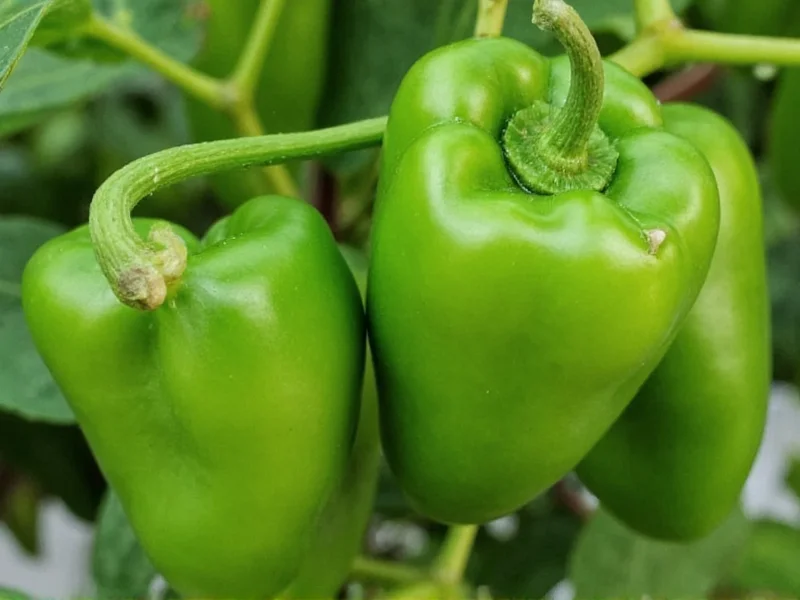Serrano peppers deliver a distinctive heat experience that's become popular in Mexican cuisine and beyond. Understanding their precise heat level helps home cooks and food enthusiasts use them appropriately in recipes without overwhelming their dishes. Unlike some chili varieties that vary wildly in heat, serranos maintain a relatively consistent spiciness within their established range.
Measuring Pepper Heat: The Scoville Scale Explained
The Scoville Scale, developed by pharmacist Wilbur Scoville in 1912, remains the standard measurement for chili pepper heat. Originally determined through human taste testing, modern laboratories now use high-performance liquid chromatography to measure capsaicinoids—the compounds responsible for heat—in peppers.
Each pepper variety contains different concentrations of these capsaicinoids, which directly correlates to its position on the Scoville scale. The higher the concentration, the higher the Scoville Heat Units (SHU) rating. This scientific approach provides consistent measurements that help consumers understand what to expect when handling and consuming different chili varieties.
Serrano Pepper Heat Characteristics
Serrano peppers (Capsicum annuum) consistently register between 10,000 and 23,000 SHU, though several factors can influence their actual heat level:
- Maturity: Green serranos (harvested early) tend to be milder than red, orange, or yellow varieties allowed to fully ripen
- Growing conditions: Stressors like inconsistent watering or nutrient deficiencies can increase capsaicin production
- Plant position: Peppers growing in direct sunlight often develop more heat than those shaded by foliage
- Individual variation: Even within the same plant, heat levels can differ between peppers
When comparing serrano pepper heat level to jalapeno, the difference becomes immediately apparent. While jalapeños max out around 8,000 SHU, even the mildest serrano starts at 10,000 SHU. This makes serranos reliably hotter with a sharper, cleaner heat that builds quickly but doesn't produce the long-lasting burn associated with habaneros or ghost peppers.
| Pepper Variety | Scoville Heat Units (SHU) | Heat Comparison to Serrano |
|---|---|---|
| Bell Pepper | 0 SHU | Not spicy |
| Jalapeño | 2,500-8,000 SHU | 2-4x milder than serrano |
| Serrano | 10,000-23,000 SHU | Baseline |
| Cayenne | 30,000-50,000 SHU | 1.5-2x hotter than serrano |
| Habanero | 100,000-350,000 SHU | 5-15x hotter than serrano |
Practical Implications for Cooking with Serranos
Knowing exactly how hot are fresh serrano peppers helps you incorporate them effectively in your cooking. Their heat profile makes them ideal for:
- Salsas where you want noticeable heat without overwhelming other flavors
- Marinades that benefit from quick heat infusion
- Dishes requiring visible pepper pieces since serranos hold their shape well when cooked
- Recipes where you want immediate heat sensation rather than slow-building burn
When substituting serranos for jalapeños in recipes, use approximately one-third to one-half the amount to achieve similar heat levels. Remember that removing seeds and white membranes (placenta) can reduce serrano pepper heat by up to 80%, as these contain the highest concentration of capsaicin.
Safety Considerations with Hot Peppers
Handling serrano peppers requires some precautions due to their significant heat level. Always:
- Wear gloves when handling, especially when cutting multiple peppers
- Avoid touching your face, particularly eyes, while working with peppers
- Wash hands thoroughly with soap and water after handling
- Use separate cutting boards for peppers to prevent cross-contamination
If you accidentally get serrano pepper juice in your eyes, flush immediately with cool water for several minutes. Milk or yogurt can help neutralize capsaicin on skin, but water alone won't effectively remove the oil-based compound.
Regional Variations in Serrano Heat
Serrano peppers grown in their native Mexico often exhibit more consistent heat levels compared to those cultivated in other regions. The specific terroir—combination of soil composition, climate, and traditional farming practices—contributes to the characteristic serrano pepper heat measurement that chefs rely on.
Commercial growers sometimes select for milder varieties to appeal to broader markets, while specialty producers may cultivate hotter strains for authentic regional cuisine. When purchasing serranos, ask about their origin if consistent heat level is important for your culinary application.
Storing and Preserving Serrano Heat
Proper storage affects how serrano peppers maintain their heat characteristics:
- Fresh serranos keep best in the refrigerator's crisper drawer for 2-3 weeks
- Freezing preserves heat levels almost indefinitely (thaw before use)
- Drying concentrates heat, making dried serranos significantly hotter than fresh
- Pickling reduces perceived heat slightly while maintaining Scoville measurements
Understanding these storage effects helps maintain consistent results when working with serrano peppers over time. The heat doesn't technically diminish in properly stored peppers, but our perception of it may change based on preparation method.
Final Thoughts on Serrano Pepper Heat
Understanding serrano pepper heat measurement helps you use these versatile chilies effectively in your cooking. Their reliable medium-to-hot heat level makes them ideal for dishes where you want noticeable spice without overwhelming heat. By recognizing the factors that influence serrano pepper heat level compared to jalapeno and other varieties, you can consistently achieve your desired spice profile in salsas, sauces, and main dishes.
Whether you're a home cook experimenting with new flavors or a professional chef crafting authentic Mexican cuisine, knowing exactly how hot are fresh serrano peppers ensures you can create balanced dishes that showcase their distinctive heat without compromising other flavors. The next time you reach for serranos at the market, you'll have the knowledge to select and use them with confidence.











 浙公网安备
33010002000092号
浙公网安备
33010002000092号 浙B2-20120091-4
浙B2-20120091-4